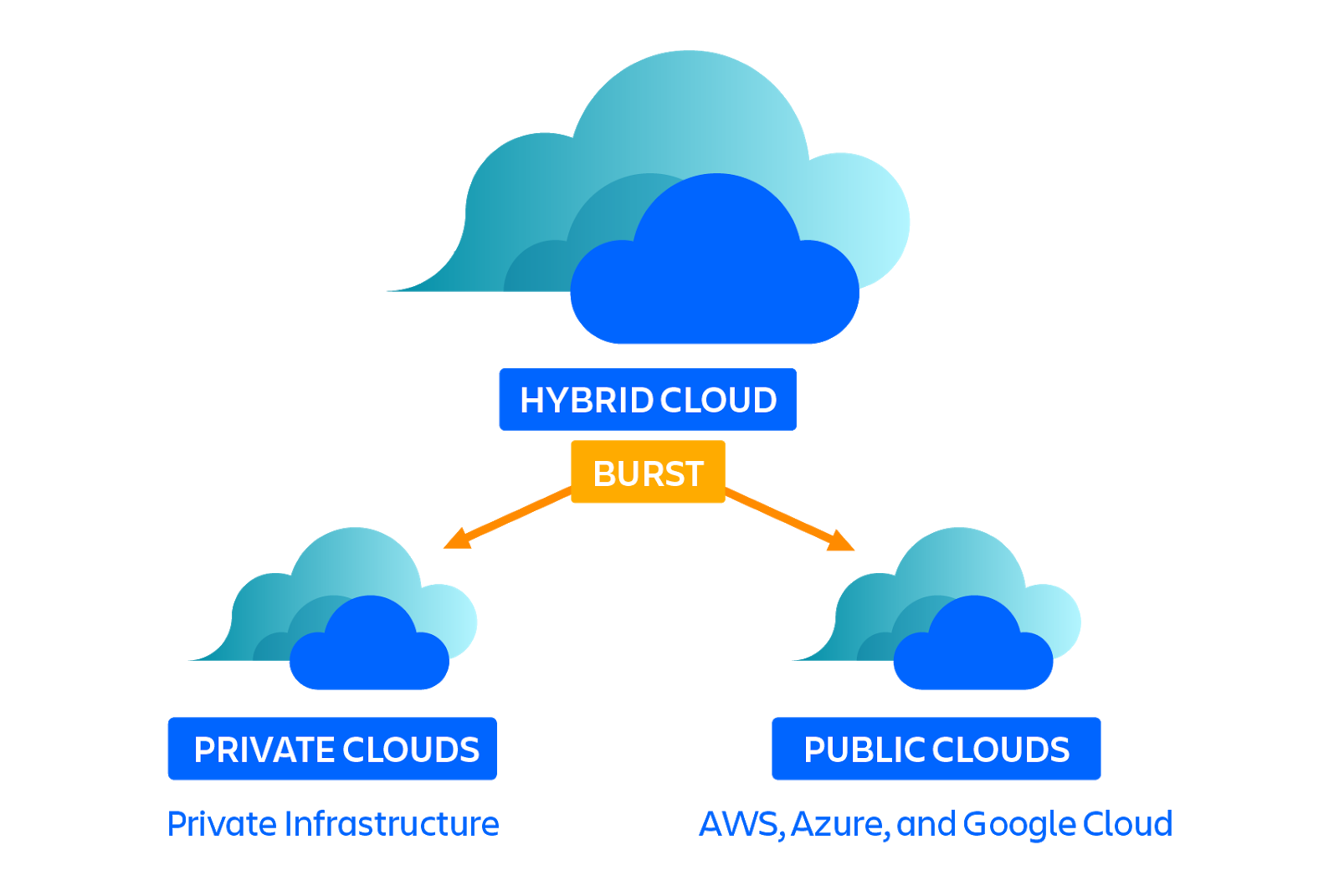Cloud bursting
How cloud bursting bridges private and public clouds to increase computing resources

Kev Zettler
Full Stack Web Developer
Cloud bursting is a cloud computing configuration that enables a private cloud to access public cloud resources by “bursting” into a public cloud when computing demand spikes.
Why settle for just a private cloud infrastructure when you can join forces with a public cloud? It’s this sort of reasoning that has made hybrid cloud the most popular form of cloud computing and made cloud bursting a popular way to access the power of hybrid cloud computing, on demand.
Try Compass for free
Improve your developer experience, catalog all services, and increase software health.
What is cloud bursting?

Cloud bursting is an application configuration that allows the private cloud to “burst” into the public cloud and access additional computing resources without service interruption. These cloud bursts can be triggered automatically in reaction to high demand usage or by a manual request.
The technology behind cloud bursting includes infrastructure as a service (IaaS), a cloud computing infrastructure that enables developers to dynamically configure cloud resources on demand. DevOps tools like configuration management and infrastructure as code (IaC) are used to specify the capacity thresholds or trigger events that will activate cloud bursting.
related material
Infrastructure as a service
SEE SOLUTION
Improve your DevEx with Compass
The benefits of cloud bursting
Flexible scaling
Cloud bursting provides the agility to rapidly adjust and adapt to changing cloud capacity needs. If teams are hit with an unexpected surge in traffic to a private cloud they can seamlessly expand to the public cloud. Accessing a public cloud offers organizations access to almost limitless resources, including large public cloud providers like Amazon Web Services (AWS) and Microsoft Azure. Plus, cloud bursting can free up local cloud resources that can be used for other purposes.
Business continuity
Cloud bursting can help ensure important applications and services do not have a disruption in service. Since cloud bursting occurs behind the scenes, users most likely will not see any disruption, if there is minimal latency.
Lower operating costs
Since organizations only pay for additional resources when needed, they can reduce their private cloud infrastructure costs by maintaining a minimal set of resources needed for critical and confidential applications.
When do organizations need cloud bursting?
Cloud bursts are triggered by spikes in computational resource demand. These bursts could be an influx of user traffic or expensive one-off computational tasks. Some common cloud bursting situations include:
Software development
Software development and analytics are two of the most common use cases for cloud bursting. DevOps teams often use multiple virtual machines for testing purposes, which are only needed for a short amount of time. Plus, CI/CD tasks are good candidates for bursting into the public cloud, since CI/CD requires several one-off tasks that run for a short amount of time when developers push new commits.
Marketing campaigns
Marketing campaigns for new product launches can generate a huge influx of traffic that requires extended cloud resources. Imagine the marketing push for an anticipated Hollywood movie or video game release. These events generate a temporary stampede of traffic that subsides after the launch news passes, so it is a great time to utilize cloud bursting.
Big data modeling and queries
Big data companies frequently need to execute one-time queries or generate models that will exceed the capacity of their private cloud. These tasks are well suited to cloud bursting. The company can burst into the public cloud for additional resources to expedite the task. Some granular examples of big data tasks include:
- High-fidelity 3D rendering
- AI and ML model training
- Autonomous vehicle simulation
Seasonal businesses
Seasonal businesses need additional computational resources during known peak times. For example:
- Holiday rush shopping for an eCommerce or shipping site
- End-of-business-quarter financial processing
- Political election seasons (campaign fundraising and website traffic for education on a candidate's proposals)
In conclusion...
When businesses need agility to react quickly to changing business demands that strain cloud computing resources, they can burst into the hybrid cloud. They expand cloud capacity for a short (or long) time, without needing to expand private cloud resources indefinitely.
Get started on your cloud bursting journey with Bitbucket Cloud.
Share this article
Next Topic
Recommended reading
Bookmark these resources to learn about types of DevOps teams, or for ongoing updates about DevOps at Atlassian.

Compass community

Tutorial: Create a component
